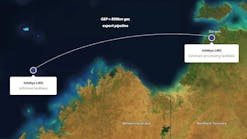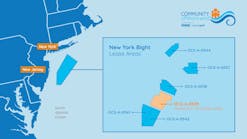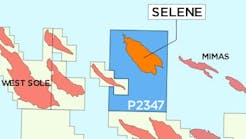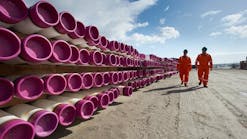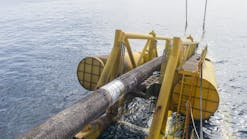Editor's note: This column first appeared in the July-August 2023 issue of Offshore magazine. Click here to view the full issue.
By David Paganie, Chief Editor
Each year at around this time, the Offshore editorial team asks readers for input on topics of interest for magazine articles, maps & posters, surveys, and webinars. This is to ensure that the magazine content meets readers’ needs. The survey results feed into the Offshore annual editorial calendar, and it serves as useful intelligence for launching new products and services. It also gives a snapshot of industry sentiment.
Some readers may be surprised to learn that “offshore wind projects and technology” was the highest-ranking topic of interest in this year’s survey. It also scored in the top four for maps and posters, and top three for editorial webinars.
The topic five topics of interest were: “offshore wind projects and technology” with 38% of reader votes, “vessels and rigs” with 34%, “floating platform design and operations” with 32%, and “project economics” and “well construction and operations” tied with 30% each. These results are relatively consistent with the surveys from the past three years; although, the offshore wind topic moved up three places from fourth in 2020 to first this year.
One key takeaway from this year’s survey was the high level of interest in deepwater technology and floating oil, gas and wind projects. This can be attributed to the rapid growth in demand for renewable energy and the desire to develop the best wind resources, which are mostly in deepwater areas. These projects require new ideas and innovation to make the developments economically viable.
Relatedly, in deepwater oil and gas development, there is an ongoing drive to find the ideal technical solutions that enable the lowest capex and shortest cycle times to first production. Moreover, as many deepwater developments can require up to $10 billion in capex, it is critical that the capital and schedule commitments made at the time of final investment decision are met.
Authors Richard D’Souza and Shiladltya Basu, inside this issue, provide a benchmarking analysis of recent deepwater projects, to improve the validation of risked sanction-to-first production (STFP) schedules and cycle-time predictability at project sanction. The authors suggest that project economics are at risk if budgeted cost and schedule slip by more than 10%.
For this analysis, STFP cycle time versus topside operating weight benchmark curves for post-2014 sanctioned deepwater FPU projects were examined and compared with pre-2014 STFP benchmarks. See page 18 for the complete findings and recommendations of this study.
Meanwhile, developers are adapting floating technology from oil and gas to convert wind to power for onshore and offshore grids. Cerulean Winds is working on an offshore integrated green power and transmission system in the UK North Sea driven by floating offshore wind turbines that would connect to oil and gas platforms. Offshore Editor Jeremy Beckman visited with Cerulean Winds’ Founding Director Dan Jackson to learn more about the company’s plans for the floating wind power project. Click here to read the report.
And for the latest on floating solar technology projects, see Offshore Managing Editor Bruce Beaubouef’s video update on the Offshore magazine website: offshore-mag.com/videos.


